Colors, materials and the overall aesthetics often take the spot-light, while functionality takes a back seat. But storage, organization and tech-enabled appliances are as much the heart of kitchens today as cabinets and hardware.
As the overall look for kitchens becomes more cohesive, functionality might be even more important, as maintaining a sleek aesthetic requires a subtle integration of storage and dedicated zones for everything from baking to beverages. Equally transformative is a growing array of tech enhancements that promise real value for consumers. All of which ensure the most beautiful kitchen also will be up to the tasks required of the hardest-working room in the home.
“Regardless of the size of the kitchen, the main design challenge is to balance space given to appliances, storage and work surfaces,” says Mary Jo Peterson, an award-winning author, educator and designer and president of Mary Jo Peter-son Inc.
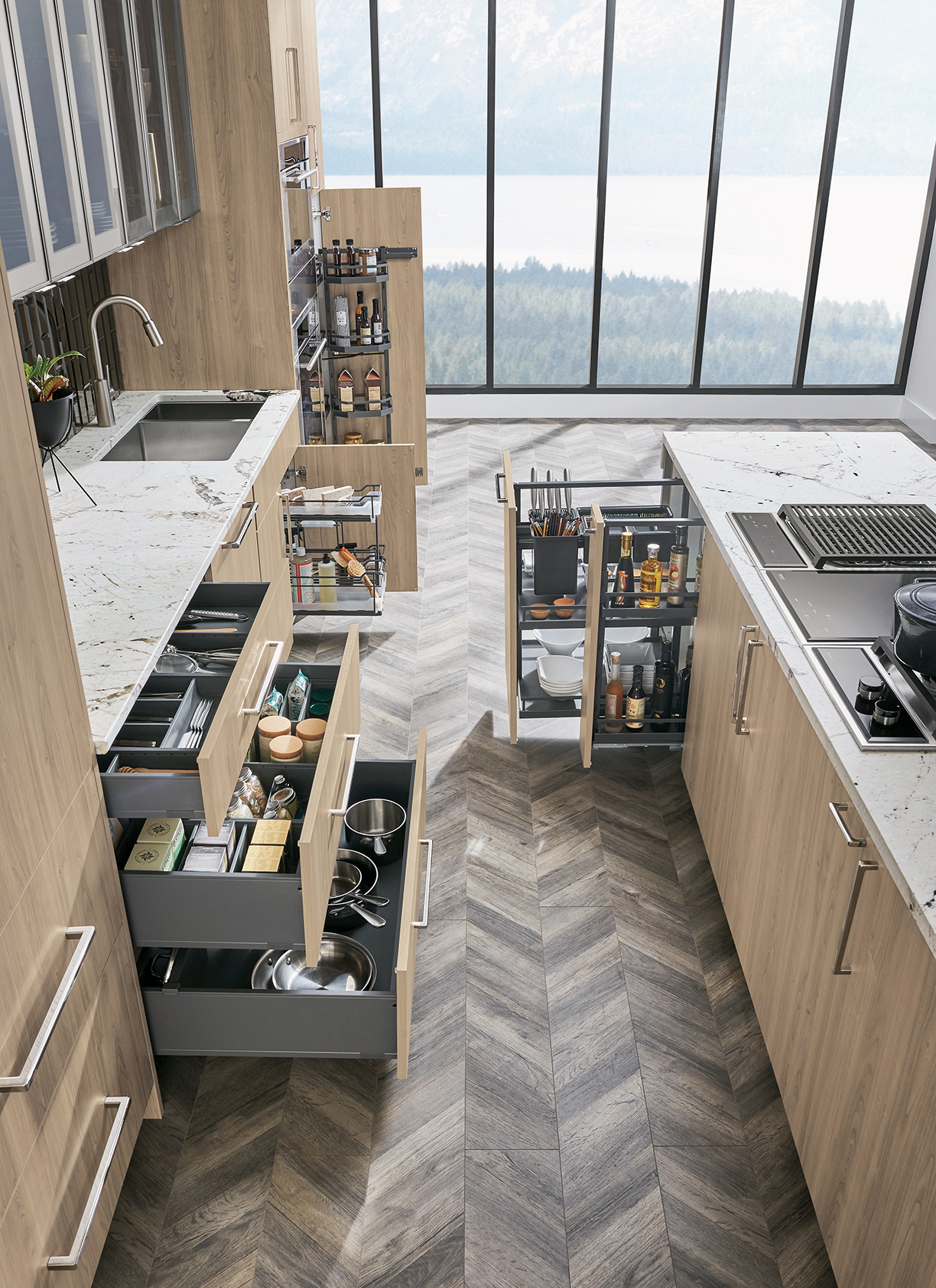
More windows and fewer walls moved storage to base cabinets. Interior storage solutions tailor a kitchen for an individual’s lifestyle and preferences. Photo courtesy of Masterbrand Cabinets.
“It’s a functional area and how your work in the kitchen is an important consideration,” says Stephanie Pierce, director of design and trends at MasterBrand Cabinets. Especially with high-end clients, she says, designers’ conversations have evolved to be more about lifestyle than appearance and style preferences. This all ties into the shift toward personalization of both aesthetics and function in homes.
In the last 10 years, she says, the industry as a whole has tripled the storage solutions offered to consumers. Additionally, there is a much greater focus on customization and adaptation for specific uses, which enables consumers to create the amount and the type of storage uniquely geared toward their use of the kitchen and their lifestyle. As an example, Pierce points to a cabinet designed specifically for dry goods. “That’s not something we would have seen five or six years ago. We would have tried to do something that was much more versatile and generic that could work with anyone’s objective.”
Amping up the need for enhanced storage and organization is an ongoing change in kitchen design. Several years ago, Pierce says, they identified an emerging trend of adding add light to kitchens with more windows and fewer walls. The end result? Storage moved to base cabinetry and, more recently, to floor to ceiling cabinets. Pull-out drawers offer the most versatility, according to Pierce, and recent research shows 79 percent of designers identified wide drawers as the top kitchen feature.
Kitchens have not only become a main place to entertain, but also a hub for a range of activities from charging devices to home-work to functioning as a home office. This is not a new trend, but Annelle Gandelman of A-List Interiors says, “lately, more peo-ple have been asking for dedicated spaces within the kitchen that cater to guests specifically. We get a lot of requests for coffee bars, butler’s pantries, and even breakfast bars filled with specialty appliances integrated into the cabinetry.”
Phil Kean sees a bar for liquor and wine gaining interest among consumers, which also moves some entertaining into areas adjacent to the kitchen. The New American Home 2019, a concept house designed and built for the home builders’ annual trade show, featured a large bar situated between the kitchen and great room that functioned both inside and outside the home. This year, Thermador introduced a dishwasher just for glasses. Kean says it’s interesting to see an appliance with such a specific function. “I think we’re going to see that more often. People might want to have a second dish-washer in their bar.”
Other specialty appliances requested for bars and beverage centers include refrigeration drawers, ice makers, instant hot faucets, drawer microwaves, convection ovens and wine refrigerators, according to Gendelman. Interestingly, one appliance that’s become a “must have” for upscale kitchens is a built-in coffee and espresso maker. Introduced at the kitchen and bath show (KBIS) this year was a faucet that delivers filtered boiling water as well as sparkling water and normal filtered water.
For high-end kitchens, the big story currently revolves around butler’s pantries and second kitchens. “We find that even people who don’t cook will invest heavily in their kitchens because it’s not just about function and food prep but also where people spend most of their time. As a result, the messier, uglier parts of a working kitchen are being moved into pantries and smaller back kitchens. These spaces are where the toaster ovens, slow cookers and ugly appliances are being hidden,” says Gendelman.
Pierce agrees. “We’re seeing fewer countertop appliances being visible,” she says. Another emerging addition to the kitchen is something Pierce calls the “walk-through pantry,” which essentially looks like a traditional cabinet door to a pantry. But open the door, and it takes you to an entire secondary kitchen that she says can be “massive.” Often it will have a sink and a second refrigerator. “It’s basically a prep kitchen that is also designed toward food storage.”
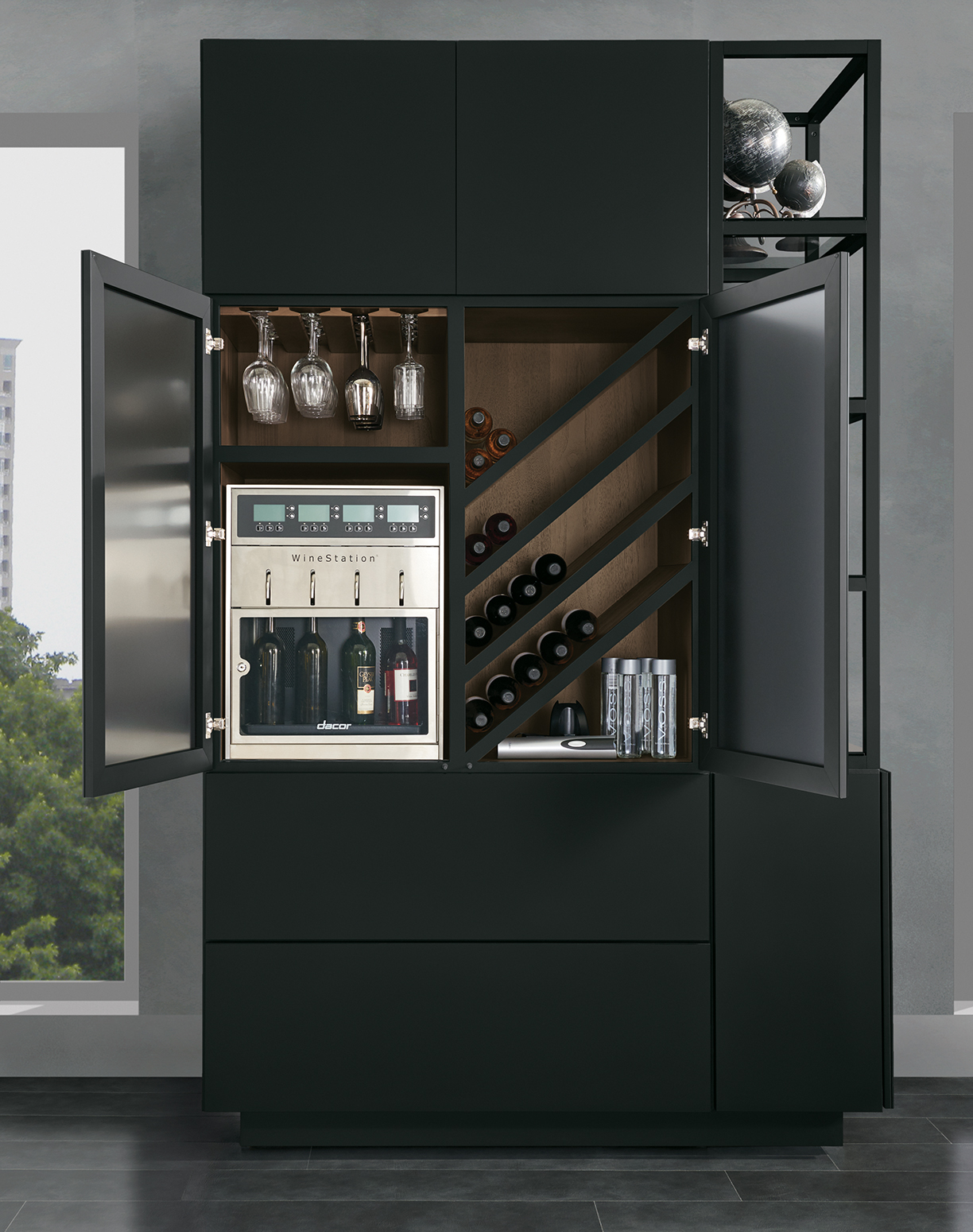
Dedicated spaces for entertaining, such as this wine cabinet, please both hosts and guests, easing congestion in the main kitchen. Photo courtesy of Masterbrand Cabinets.
“Convenience is luxury,” observes Gendelman. Motorization is a convenience, particularly in contemporary kitchens, where cabinet doors, even some appliances, open in response to a slight push. Additionally, manufacturers have introduced a range of ways to open cabinets, including doors that tilt upwards, allowing users to leave cabinets open without interfering with traffic patterns.
Consumers also see the value of technology as a way to create convenience. In research from the National Kitchen and Bath Association, 72 percent of consumers believe technology “adds market value to my home.” “Saves me time and steps” was perceived as a main benefit of kitchen technology by 70 percent of those surveyed. A majority also said kitchen tech is important because “it makes my life easier.”
In this research, consumers outpaced designers in their enthusiasm for and understanding of technology. There was strong approval and interest in smart appliances and tech solutions that enable consumers to control various aspects of the home from the kitchen, as well as solutions that make meal ideas/preparation easier and more enjoyable. Very appealing tech features for a large majority of consumers include appliances/faucets that send remote failure/leak alerts; cooking appliances that sense over-cooking or being left on; hands-free faucets with Wi-Fi interconnectivity; appliances that can be activated remotely; and sensors that can monitor/communicate food inventories in your cabinets.
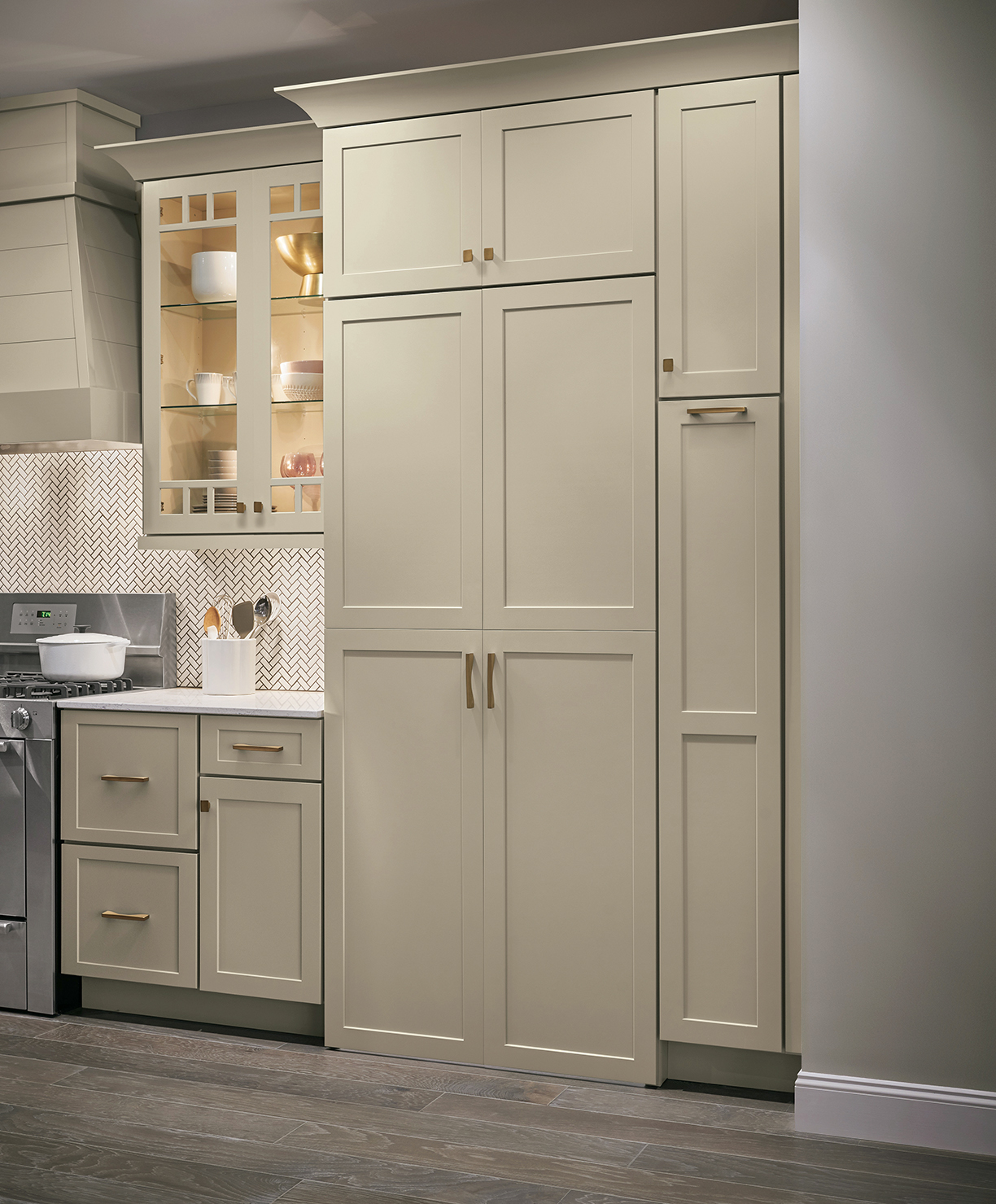
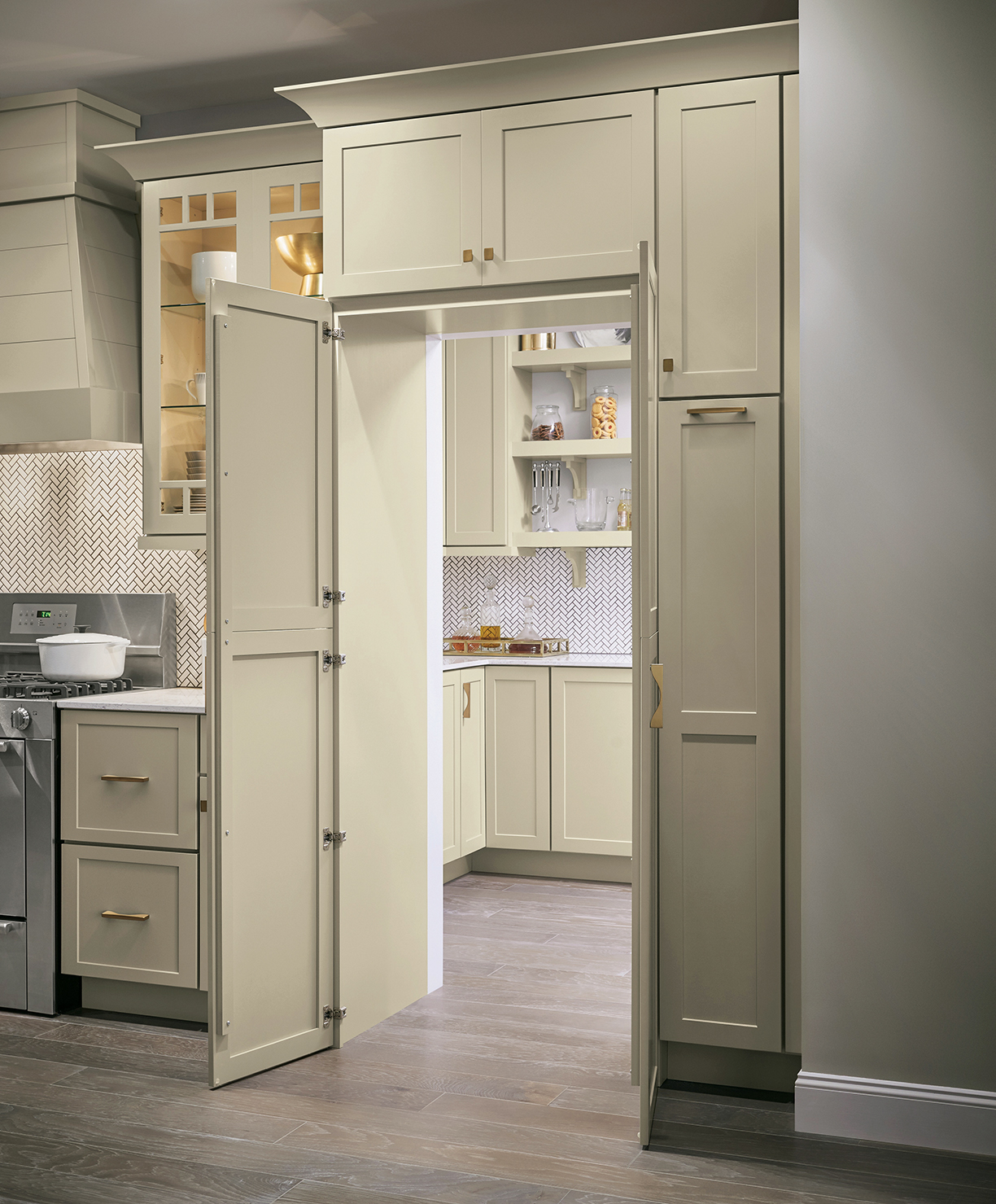
Now you see it, now you don’t. It’s the messy kitchen. Cabinet doors open to a second space for prep, storage and even cooking. Photos courtesy of Masterbrand Cabinets.
For consumers, the timing might be right. Smart-home technology has changed in only a few years, moving from a nice-but-quirky gadget to something worthwhile. “Smart is the new green” was the consensus of a trio of kitchen design exerts speaking at KBIS.
Ryan Herd is a tech veteran, NKBA industry insider and author of Join the Smart Home Revolution. He sees technology finally turning the corner, moving from a nice-to-have gadget to something offering real value to consumers. “Things are knitted together better” is his take on the cur-rent state of technology for the home and also for kitchens. Knitting together refers to ways different applications, devices and even appliances work together to produce outcomes consumers find beneficial. Some, such as the number of cooking apps integrated into appliances (highlighted at KIBS this year), are already in the marketplace. Others are on the cusp of being introduced. Appliance manufacturer Miele introduced Con@ctivity 2.0, which connects an induction cooktop with a ventilation hood. When the cooktop is turned on, the information is transmitted to the hood, which turns on. It continues to run for a few minutes after cooking is completed and then automatically turns off.
Bosch, along with Thermador and Gaggenau, introduced a line-up of voice assistants, all part of their smart, open-platform Home Connect. “All within one app, Home Connect empowers consumers to personalize the way they interact with appliances through any number of our partners and services, such as waking up to a fresh cup of coffee each day when the alarm goes off, setting the lights to flash when the washing machine cycle is finished, or selecting a recipe that will communicate with the oven to ensure it’s utilizing the right program and temperature for optimal results,” said Patrick Palacio, director of innovations for Home Connect. Partners includer Kitchen Stories, Drop and Innit. Chefling is the first AI powered kitchen assistant that provides pantry management, online shopping and recipe instruction.
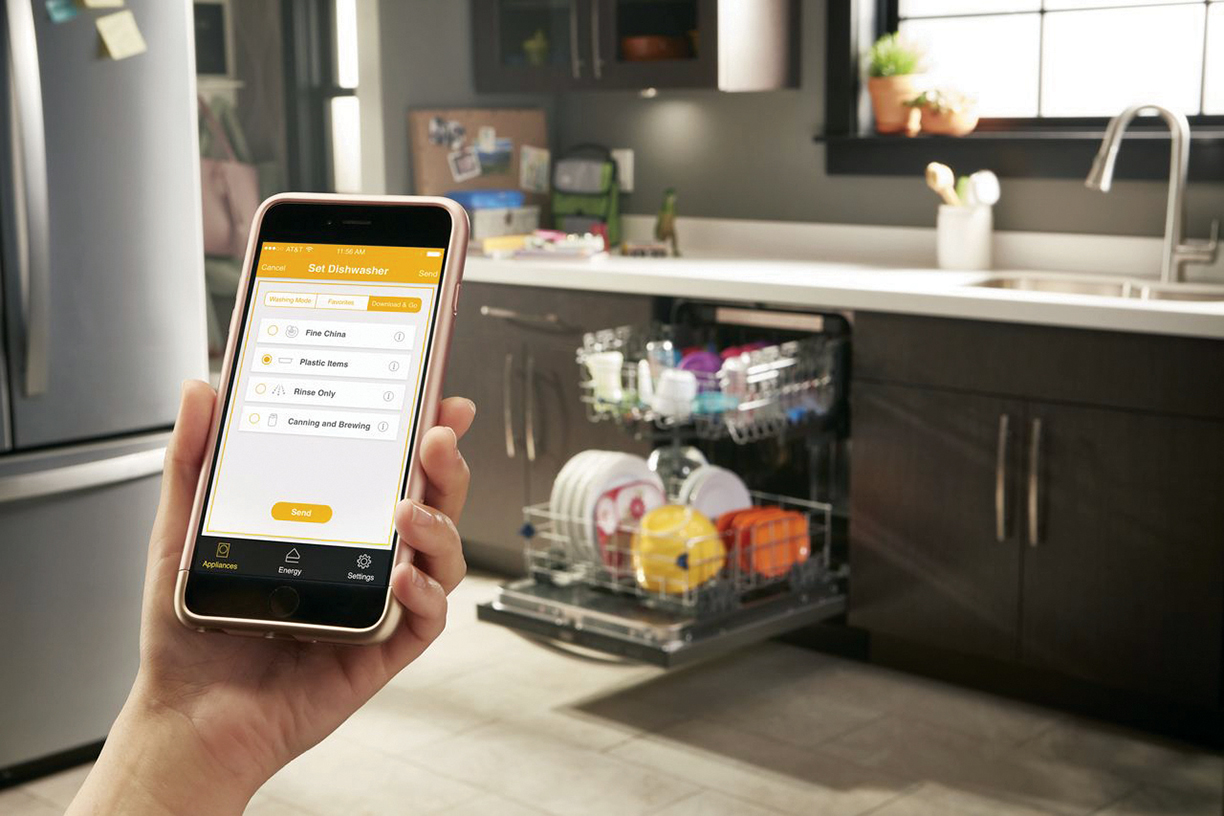
Photo courtesy of Whirlpool.
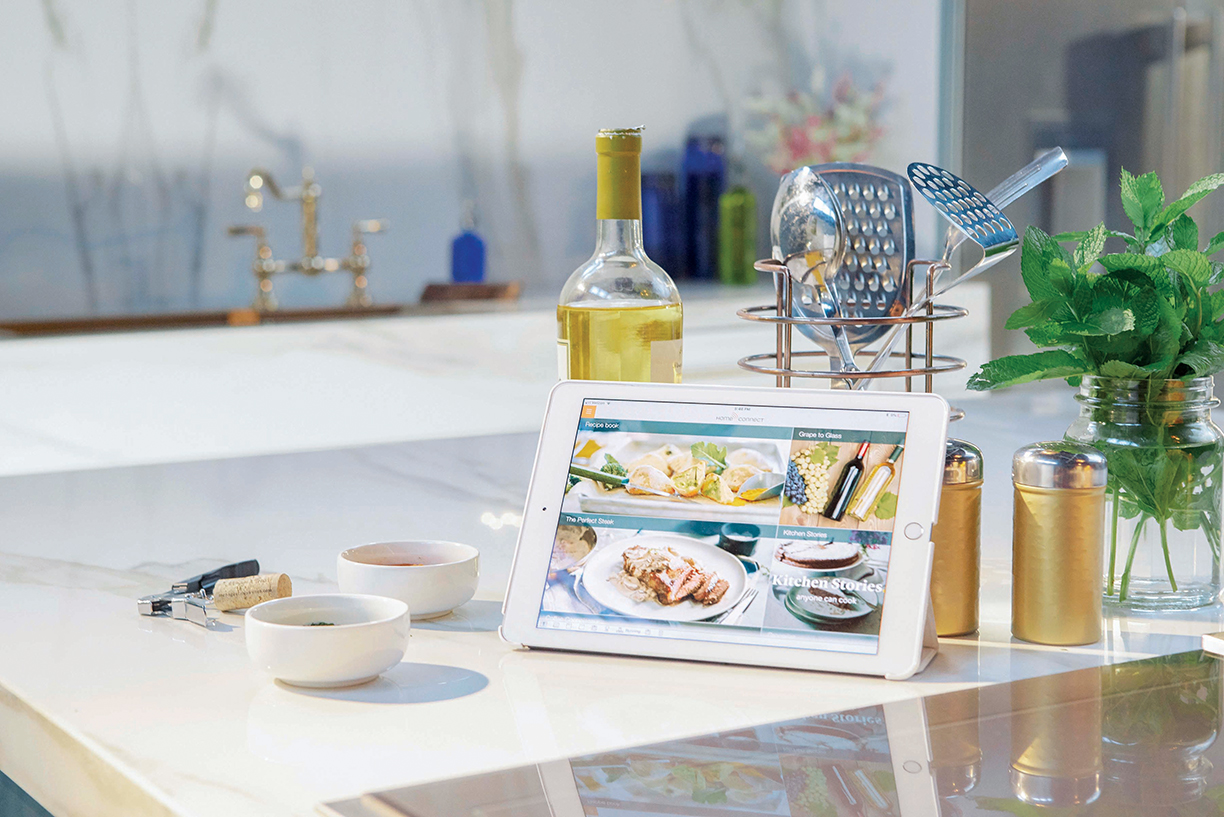
Photo courtesy fo Thermador.
Whirlpool won innovation awards at CES this year, including an innovation award in the Smart Home category for Kitchen Aid’s Smart Oven+, which includes grilling, baking and steaming within one appliance. The KitchenAid App gives status updates, and through the Yummly app users can send cooking instructions directly to the appliance. Voice control via Alexa or Google Home is another innovation.
Designers and manufacturers are look-ing for ways to remove the tangle of cords when multiple devices are being charged. Look for more ways to plug-in, with sockets and charging areas that pop up from countertops or can be installed in drawers. And also to not plug-in, using materials that charge wirelessly, such as a countertop material recently introduced by Corian.
Connectivity also means a manufacturer can detect a problem with an appliance, sometimes even before the consumer does. Herd uses the example of a wine refrigerator that has all the functions one would expect but also includes an app to scan the bottles and maintain an inventory. It has social aspects to facilitate collaboration with friends. The app also enables the manufacturer to monitor the compressor and other mechanical elements and alert consumers (along with scheduling service) if there is a problem, which Herd says is particularly valuable if you are storing $100 bottles of wine.
Winning a top award from NKBA was Flo by Moen, which detects and stops leaks from toilets, showers and faucets, to the pipes in the foundation and behind the walls. Not only does the device alert consumers to leaks, but it can then also turn off the water remotely.
In the not-too-distant future, a smart refrigerator will not only allow you to remotely see what’s inside, it will also keep an inventory that is updated every time something is added or removed. Eventually, cabinets will have a similar capability. “That’s where you get the stitching together,” says Herd. In the next step, the entire kitchen knows everything. Apps will not only keep track of what’s on hand, but they will also make meal suggestions and possibly tailor those suggestions to any specific preferences or even the allergies of guests.
Kitchens and appliances are long-term investments, and some might be reluctant to invest in technology. However, for upscale consumers it’s easy to envision a time when the convenience afforded by technology will far outweigh the cost.














